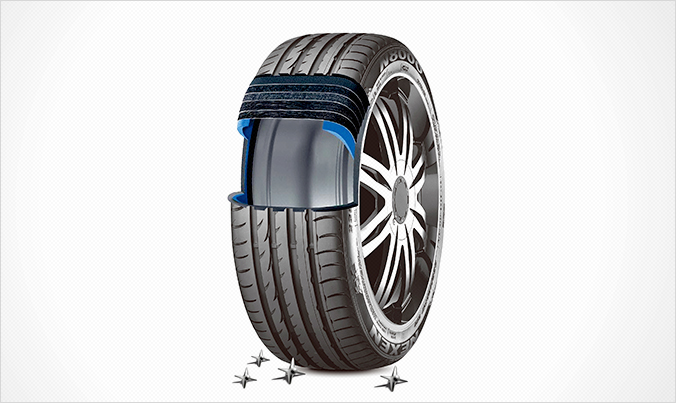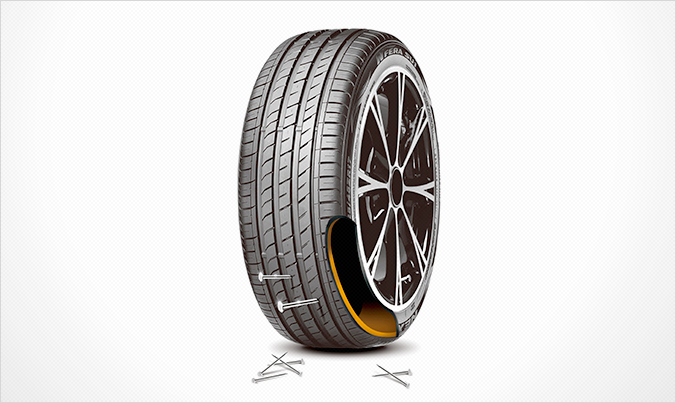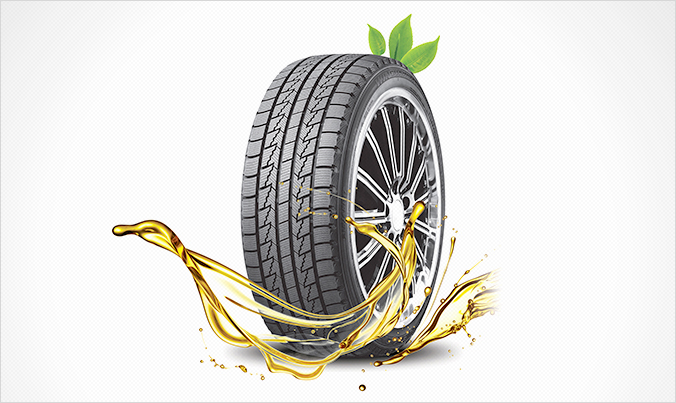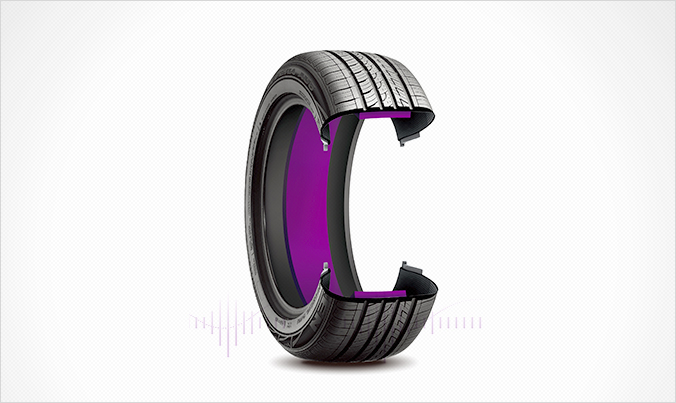
Tires are indeed made of rubber. But is it the only material that tires possess?
Tires have evolved to a point where they are no longer just made of rubber. Many tires incorporate advanced technology in order to minimize wear and tear, while minimizing the risk of puncture. Here are some new breeds that represent the evolution that tires have achieved in step with the development of automobiles.

Puncture-free run-flat tires!
A ‘run-flat tire’ is designed to resist the effects of deflation when punctured and enable the car to still be driven up to a certain speed (80 km/h).
With around 10 times thicker side walls and reinforcement within it, a run-flat tire can support the weight of the car to a certain degree when punctured and enables the car to cover a range of 80 km or longer at a maximum speed of 80 km/h.
Its capability to keep the car running safely to a place where it can be repaired or replaced, a run-flat tire eliminates the need for cumbersome and often dangerous replacement of a punctured tire on the roadside. It also avoids the need for always ensuring that you have a spare tire with you. Common applications include military vehicles, sport cars and bullet-proofed vehicles for VIPs.

‘Self-sealing tires’ have a layer of sealant that seals itself in the event of a small hole due to being punctured by a nail or screw. This way, the loss of air is prevented from the outset. They are also called ‘sealant tires’ as sealant plays a critical role.
With a regular tire, whenever something penetrates its tread, loses air inside it and experiences deflation before it eventually goes flat. This is the situation commonly known as a puncture. A self-sealing tire has a lining of sealant in the form of jelly which shifts to the damaged location automatically and self-seals in order to stop deflation from occurring.
Though self-sealing tires are 10 percent heavier than regular tires, they provide a similar level of braking performance, steering and noise.

‘Vegetable oil tires’, as the name suggests, use vegetable oil as one of its materials. Offering good flexibility at low temperatures, they provide improved handling and braking on icy roads. They can also be expected to provide higher safety in winter as they can reduce the risk of accidents on icy roads. Once widely adopted, vegetable oil tires will help protect the earth thanks to their eco-friendliness, while reducing the risk of accidents on snowy surfaces during winter.

‘Sound-absorbing tires’ reduce noise emanating from them by diffusing the vibration of air inside. Tire noise is transmitted to the cabin of the car when air within the tire begins to vibrate. Sound-absorbing tires have the capability to diffuse the air to reduce the noise. Tire tests reveal that it can reduce noise by as much as 13 percent, which signals that they can ensure a better ride.
As seen above, replacement is no longer the only solution for punctured or torn tires. Tires have always stayed on top of the evolutionary needs of automobiles.
‘NEXEN TIRE’ is playing a leadership role in the proliferation of advanced and safer tires by supplying run-flats, self-sealing and sound-absorbing tires. You can expect that, over time, ‘NEXEN TIRE’ will provide you with optimized products that harness the latest technological advances. 